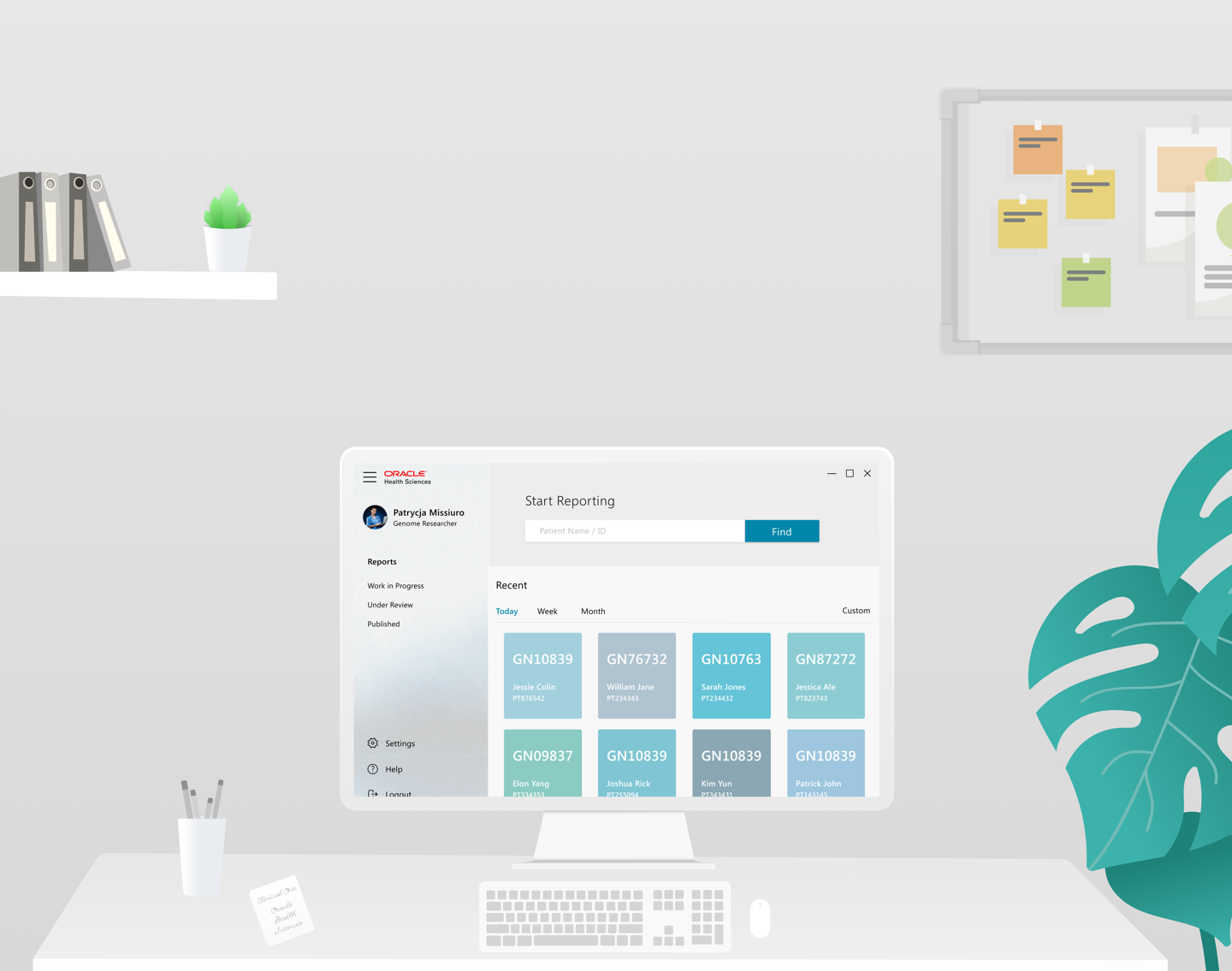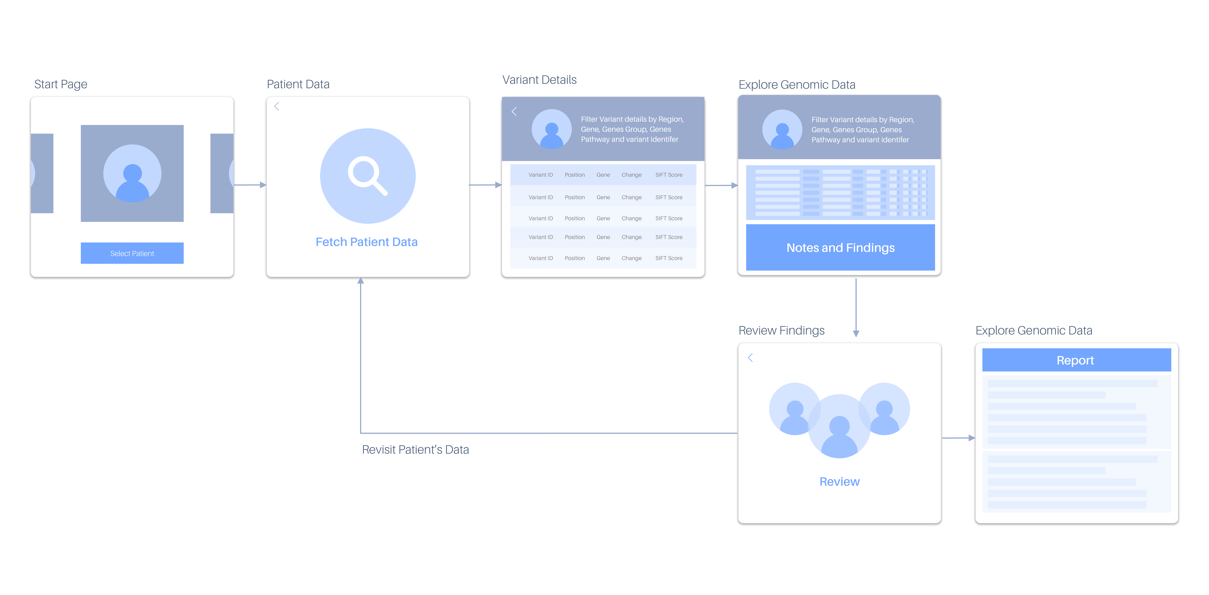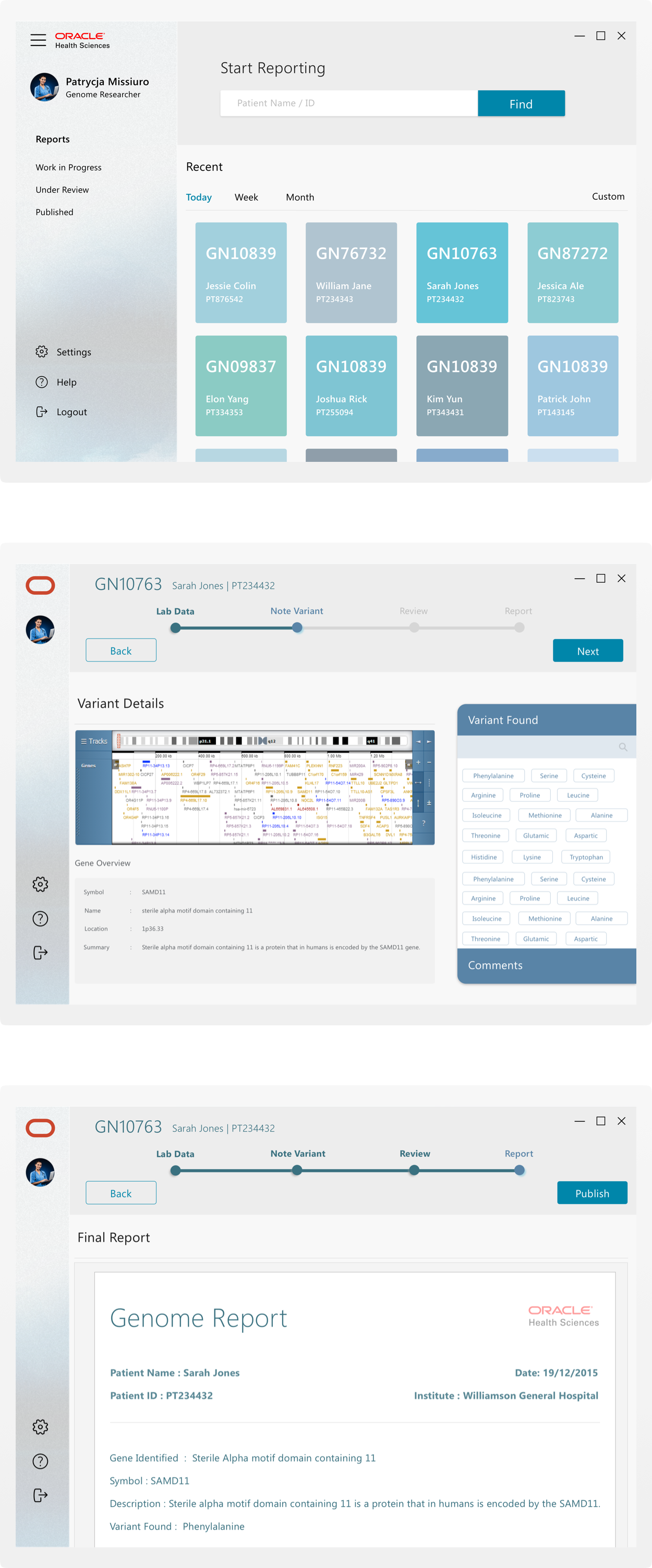Precision Medicine is an emerging approach for disease treatment and prevention that takes into individual variability in genes, environment, and lifestyle for each person. This approach helps doctors and researchers to predict more accurately which treatment and prevention strategies for a particular disease will work in which group of people.

Problem Statement
Successful Clinical trials require many people, data, and processes working as one. Doing this manually takes a pretty long time and making it free of duplications, redundancies, and errors make things more complex and time taking. Another major challenge to researchers is to ensure they are always working on most current data for accuracy. Especially analysis Genomic data and reporting is very crucial and timely reports will save lives.
My Role in this project is to lead complete end-end experience and deliver an intuitive genome reporting tool. Coordinated with User Researchers and conducted multiple data-gathering sessions to understand the pain points Clinical Researchers go through to perform clinical trials and mainly reporting genomic data. Information Architecture, Visuals, and Prototyping use to be my major deliverables. However, I extended my support in successfully delivering the best user experience possible.
Data Gathering and Analysis
Data Gathering helped to come up with user stories that mapped to real-world scenarios. Identifying the tasks which are performed more often and connecting one workflow to another workflow helped to provide a seamless experience. One of the primary challenges users use to face is working on the most recent data available in database and reporting, sometimes doing it manually increases the chances of losing the records and traceability becomes the biggest concern. Last but not least, reports have to reach the field quicker so patients can receive new therapies faster.

User Flows

Integration of Genome Reporting tool into Clinical One platform made clinical researchers and investigators have real-time visibility into clean, complete, and standardized study data. Seamless traceability and a record of all activity ensure they are always working from the most current data. Clinical researchers have access to complete up to date study data while on the go and across all the devices. It’s easy for them to flag issues and keep trials on track.
Sketches


Corollary
Genome Reporting tool became a huge headway in the process of reporting, researchers felt the transition to an automated tool from the manual process is efficient and streamlined. The ability to prevent human errors and suggestions based on best practices are a few highlights.
Takeaways
When we heard the term technical constrains or limitations it doesn’t mean we need to compromise on design all the time, the right trade-off will push the most important UX suggestions which can really make a huge impact on end-user. The simple trade-off was displaying Genome tracker in the same reporting page rather than in a new window to note variant details is vital than having a micro-interaction of flip to display info of reports in the dashboard.
Early testing with external or internal users will give pretty good insights, especially when building a new product from scratch. Sometimes end-users perspectives open up new dimensions and lead to wow factors.



